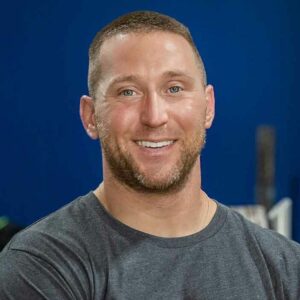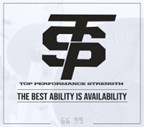The primary goal in the early off-season phases is to build the foundational and general qualities to set athletes up for success for future training phases. The primary goals early on include mainly restoration of lost joint range of motion due to the repetitive nature of movement over the course of the season. We need athletes to have the ability to access full joint range of motion so they can express speed, strength, and power output with maximal force production.
One of the main factors we want and need to consider is the fact that baseball players just came off a long season where they were doing a high workload of agility work, sprints, and aggressive rotational work via hitting and throwing every day. The last thing we want to do early in the off-season is add workload in the areas and focus on giving them what they need to address from a standpoint of where their weaknesses and limitations reside.
This is a constant theme we will follow throughout the course of the off-season. When we add something, we need to take something away to accommodate for the overall workload and stress we’re displacing on the body to minimize wear and tear. This is why we won’t be doing a lot of agility work, sprinting, jumping/plyometrics, and medicine ball work early on. We’ll be doing a lot of movement/mobility circuits to work on restoring joint range of motion.
Check out mobility drills baseball players can start implementing right away with results.
Early on, we mainly want to focus on building general physical qualities, restoring mobility, improving movement quality, and getting stronger in the main lifts such as squats, deadlifts, and bench presses. As the off-season progresses, baseball players will shift their focus on skill development and start taking more ground balls and batting practice. Not only that, typically around December and January is when throwing programs become more aggressive in workload due to bullpens and live at-bats. When this takes place, we need to take something away as mentioned above. When rotational work becomes more aggressive and the workload increases, we need to consider the amount of rotational work we’re doing in a strength and conditioning setting.
We do a lot of medicine ball work starting as early as November going through January prior to tapering off as February comes around. We can be really aggressive, intentful, and purposeful with how we approach medicine ball work to address and improve rotational power output. This type of training has the highest correlation to improving the gold standards in baseball- bat speed, exit velocity, and throwing velocity. All performance metrics baseball players want to improve upon to gain the competitive advantage.
Each phase throughout the off-season has a specific goal, intent, and purpose. That comes down to the individual athlete. Where are they currently from a physical standpoint? What are their goals, wants, needs, and demands of their sport and position they play? What is their injury history? What is their training experience? Where do they want their performance metrics to be by the time the next competitive season they play? For high school baseball this could be as early as March or as late as June depending on whether or not they play high school baseball or just opt for summer baseball. Knowing how much time we have for off-season athletic development needs to go hand in hand with the athletes we’re working on developing to see improvements in performance and keep them healthy and on the playing field throughout the long, grueling season.
Interested?
If you’re interested in getting an assessment and performance testing to get the right path toward developing athleticism, health, and building a sustainable playing career, contact us at support@
I hope this was helpful. If you have any questions please contact us.
Thank You
Kip Steingart, Owner
Top Performance Strength


